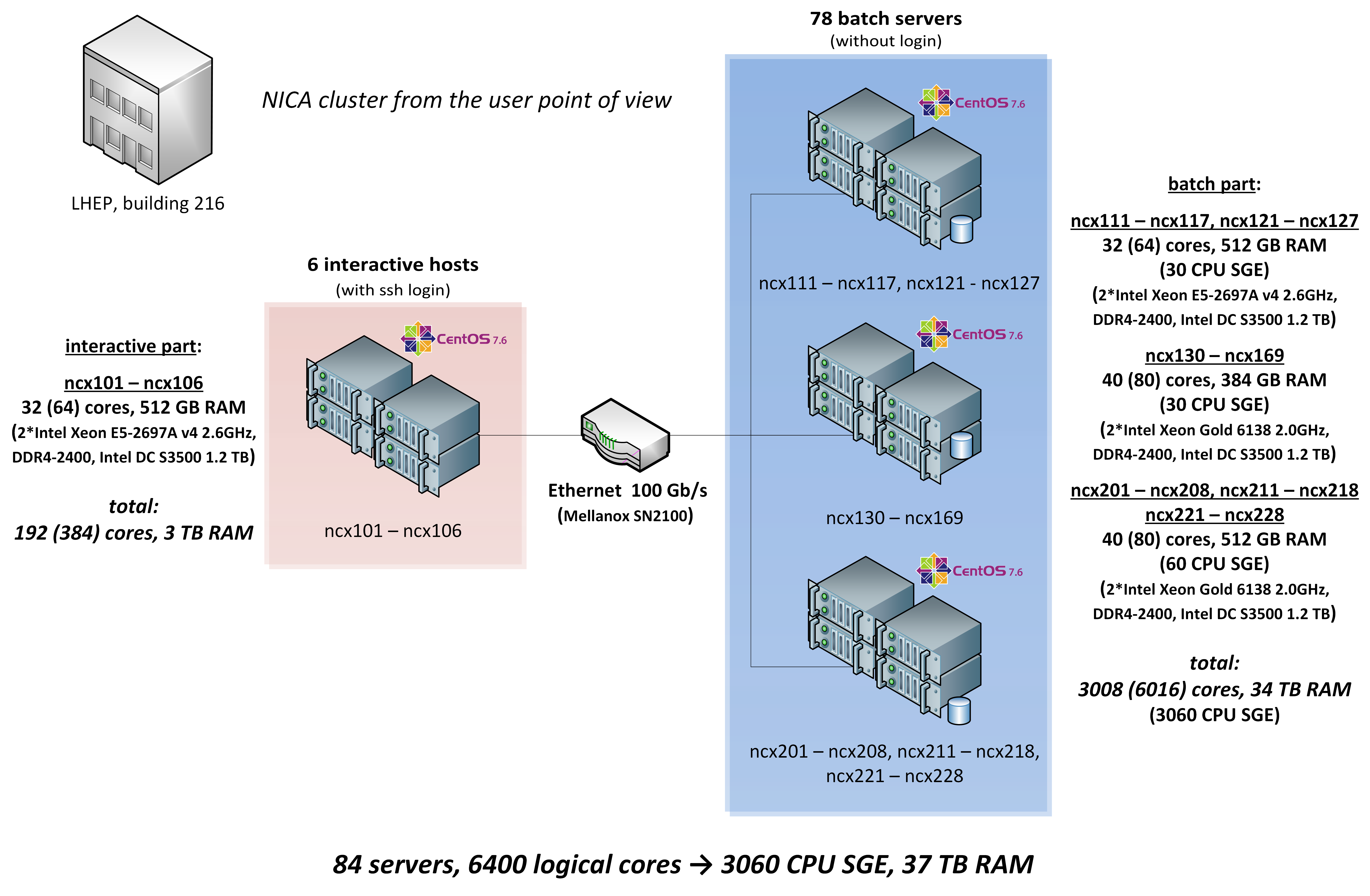
NICA Cluster
OS: CentOS Linux 7
Exp. Software: CVMFS, /cvmfs/bmn.jinr.ru/centos7/
EOS Storage: 1 PB replicated, /eos/nica/bmn/
SLURM: 6 312 slots (Xeon log. cores)
Official Website
ssh -X [username]@ncx.jinr.ruThe detailed rules of using the NICA cluster are listed on the official NCX web site here. Please, read it carefully.
The necessary packages for BmnRoot, FairSoft and FairRoot are located on the CVMFS file system. To use them, load the environment script every time you enter the NICA cluster. In other way, you can add the command to the end of ~/.bashrc file to be automatically executed every time at login.
source /cvmfs/bmn.jinr.ru/config/x86_64-centos7/cluster_config.shInstallation of the BmnRoot software is described here at the section “Installing the BmnRoot framework”.
The cluster storage system includes the following user disk spaces:
- User home directory: /lhep/users/$USER, which does not exceed 50 GB.
- User directory on NCX EOS file system: /eos/nica/bmn/users/$USER, where to get a necessary EOS space, you can request for the working directory by email to the software coordinator (gertsen@jinr.ru). Please, write your ncx login and a desired size of your working directory in the mail.
- Scratch spaces, /scratch1 and /scratch2, which are deployed on SAS HDDs and can be used for data processing (faster than the main EOS storage).
- Hot storage, /scratch3 and /scratch4 – a fast temporary storage system on SSDs, where files are automatically deleted if they have not been accessed.
- Temporary space: /tmp – a fast local disk for intermediate calculation data, do not forget to delete files after the end of your task.
To run your tasks on the NICA cluster, you can use SLURM batch system. If you know how to work with SLURM (SLURM on JINR CICC), you can use sbatch command on the cluster to distribute data processing. A simple example of such user job for SLURM can be found here.
NICA-Scheduler has been developed to simplify running of user tasks without knowledge of SLURM. You can find how to use NICA-Scheduler here.

